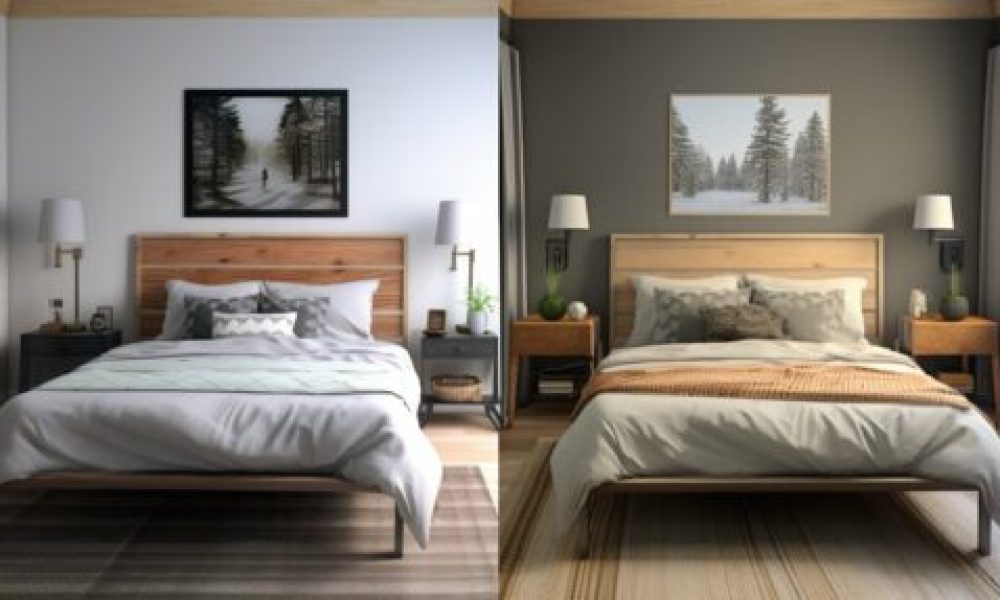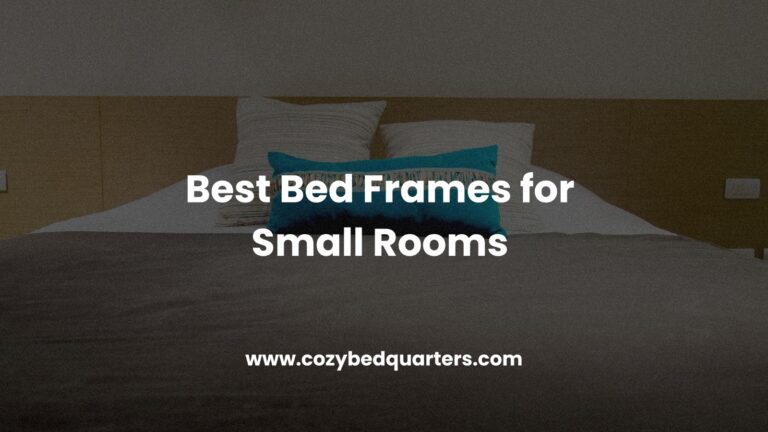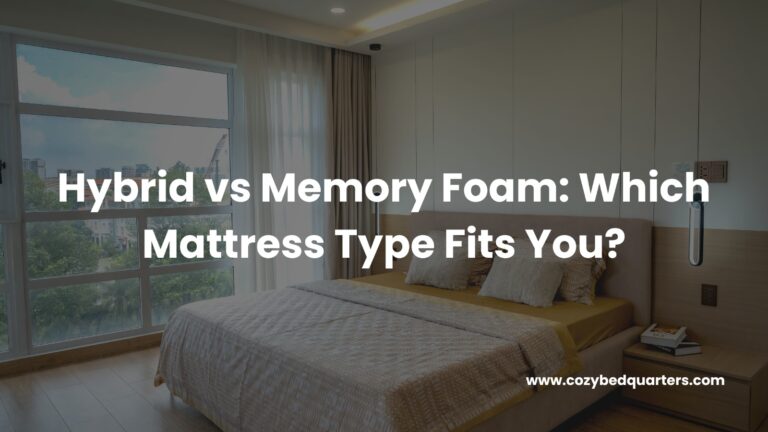Wood vs Metal Bed Frame
Deciding between a wood vs metal bed frame? We break down the pros and cons to help you find the perfect match for your bedroom’s comfort, style, and function.
When choosing between wood vs metal bed frame options, consider the style that best complements your bedroom décor.
Key Takeaways
- Metal frames are durable, lightweight, and often adjustable—but may rust or squeak over time.
- Wooden frames offer customization, strength, and a classic look, but can be heavy and damage-prone.
- Your decision should consider aesthetics, room size, support needs, and lifestyle habits.
For additional insights, visit resources like
Sleep Foundation’s bed frame guide and
Architectural Digest’s best bed frames picks.
Advantages of Metal Bed Frames
Metal bed frames are increasingly popular thanks to their robust construction and practical benefits. These frames are typically crafted from steel, iron, or aluminum, offering a combination of strength and resilience that can support even the heaviest of mattresses. Because of their durability, they’re ideal for long-term use and are less likely to warp or crack over time compared to wood.
The comparison of wood vs metal bed frame characteristics is essential for making an informed decision.
Another major perk is their lightweight design. Moving or rearranging furniture is a breeze with metal frames, making them a preferred choice for renters or anyone who relocates frequently. Some models even fold or disassemble easily, enhancing portability and storage convenience. This portability is especially helpful in apartments, guest rooms, or children’s rooms, where space flexibility matters most.
- Durability: Built from tough metals that resist warping and wear
- Lightweight: Easier to move and assemble
- Adjustability: Many metal frames come with adjustable settings for height or mattress type
- Under-bed Storage: Offers added space-saving for small rooms or studio living
Additionally, metal bed frames often suit minimalist and modern bedroom themes. Their clean lines and sleek finishes add a contemporary feel to your room. Explore some decor ideas in our minimalist bedroom guide.
Explore more in our guide on the pros and cons of a metal bed frame to help you decide if it suits your sleep style.
To sum up, metal bed frames are versatile and functional, making them a solid investment for practical-minded sleepers. They balance form and function, offering both strength and style with minimal effort.
Ultimately, the wood vs metal bed frame debate boils down to personal preference and practical needs.
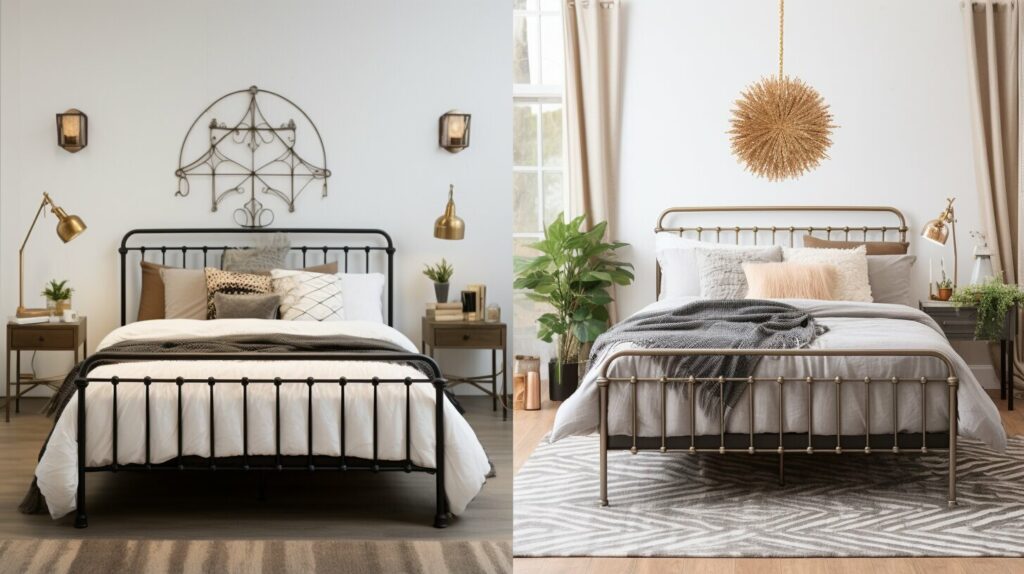
Disadvantages of Metal Bed Frames
Despite their many strengths, metal bed frames aren’t perfect. One of the primary concerns is the potential for rust, especially in humid environments or if the coating wears down. While many are treated with rust-resistant finishes, ongoing maintenance is key to preserving their longevity.
Noise can be another drawback. Over time, metal joints can loosen, causing squeaks or rattles that disrupt your sleep. This can be frustrating, especially for light sleepers. Some couples also find metal frames to amplify movement. Using anti-squeak washers or noise-dampening pads can help.
- Rust Risk: Particularly in moist climates without proper coating
- Noise: May creak or squeak with movement over time
- Less Forgiving: Lacks natural cushioning and give found in wood
- Potential for Allergies: Some people react to metals like nickel or chromium
Read more on metal bed frame issues at
Quagga Designs.
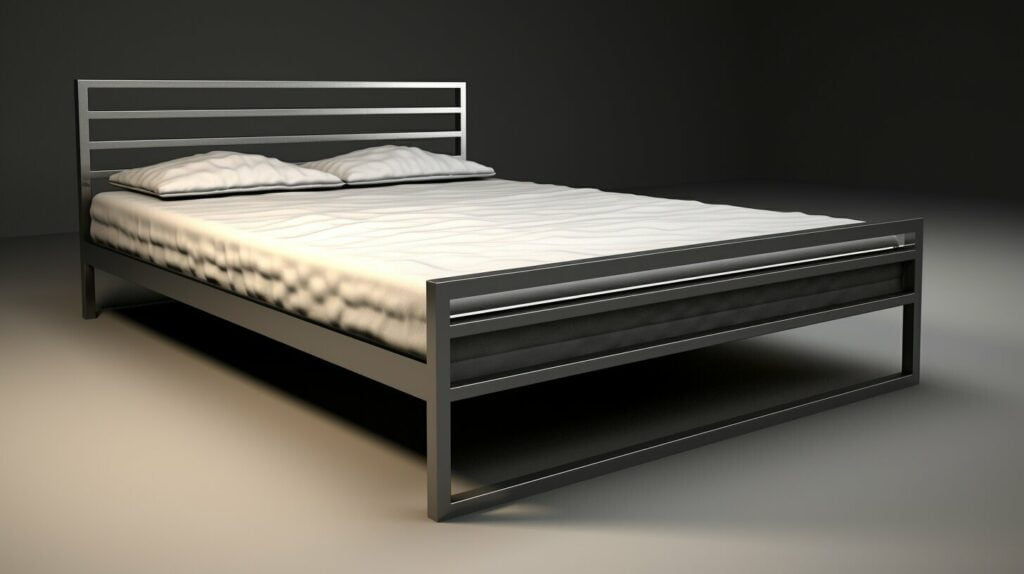
Advantages of Wooden Bed Frames
Wooden bed frames offer timeless charm and natural warmth that enhances the coziness of your bedroom. These frames are commonly made from solid hardwoods like oak, maple, or walnut, as well as more affordable options such as pine or engineered wood.
The choice between a wood vs metal bed frame can significantly impact your bedroom’s atmosphere.
Wood’s natural strength makes it highly supportive, especially when paired with thick slats or a platform base. High-quality wooden frames can last decades and are often seen as heirloom pieces.
- Visual Appeal: Natural grain patterns offer beauty and variety
- Customization: Easy to refinish, paint, or stain
- Stability: Less prone to wobbling or movement
- Eco-friendly Choices: Many brands offer sustainably sourced wood options
Wooden frames are also known for quieter performance—no squeaks or creaks, even with years of use.
For more eco-conscious options, check out our article on
eco-friendly bed frames.
For a full material breakdown, check out our comparison article on
bed frame materials and how to choose the best one.
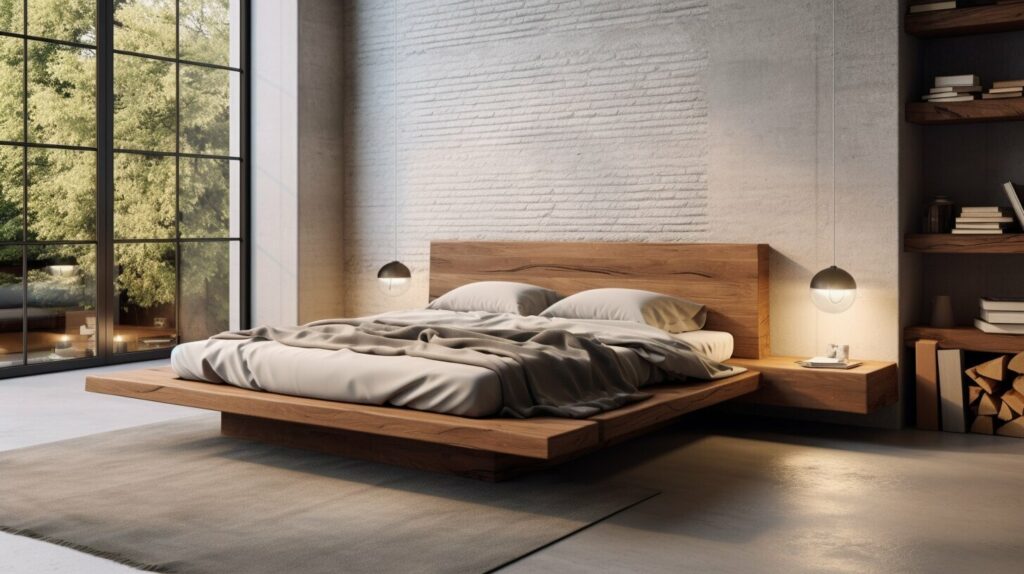
Disadvantages of Wooden Bed Frames
Although beautiful and strong, wooden bed frames do have their drawbacks. For starters, they are significantly heavier than metal frames, which can make moving or rearranging furniture a hassle.
If you prefer a wood vs metal bed frame, weigh the aesthetic versus functional aspects carefully.
Additionally, wood is more susceptible to environmental damage. Changes in humidity can cause warping or cracking, and even minor spills or scratches can leave lasting marks.
- Heavy and Bulky: Challenging to move
- Requires Maintenance: Needs polishing and moisture control
- Fire Risk: Being a combustible material
- Potential for Damage: Can dent, scratch, or attract pests
Despite these cons, many still prefer the authenticity and warmth of wooden bed frames. Using furniture pads and placing beds away from moisture sources can mitigate many issues.
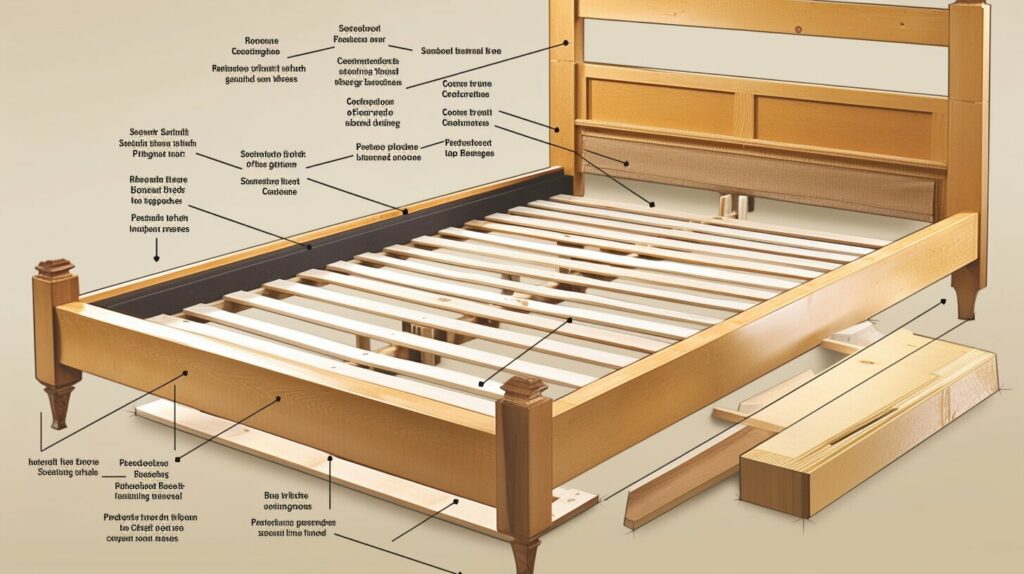
Aesthetic Appeal and Room Compatibility
The aesthetic impact of a bed frame can dramatically transform a bedroom’s vibe. Wood offers a warm, traditional look that works well in farmhouse, Scandinavian, or vintage-inspired designs.
Metal frames, meanwhile, often feature minimalist designs with sleek lines, making them ideal for industrial or modern aesthetics. They typically come in neutral tones like black or white.
- Wood: Timeless charm, available in diverse tones
- Metal: Clean, contemporary, space-efficient
- Room Match: Choose based on decor style and room size
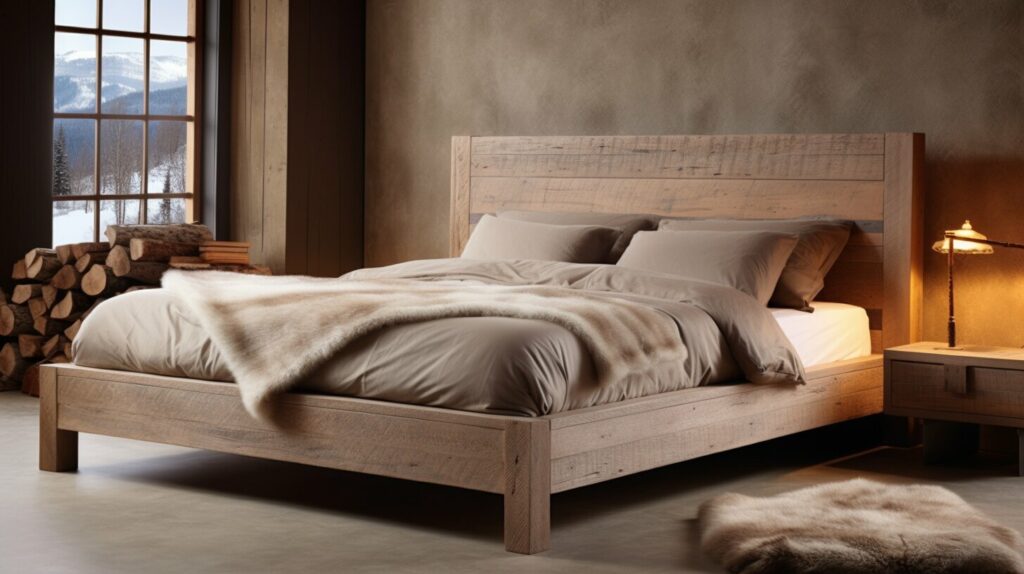
Proper Support and Mattress Compatibility
Support is one of the most important aspects of a bed frame, directly affecting your sleep quality and mattress longevity. Metal frames, especially with a grid or platform base, provide solid, even support.
Understanding the support levels in wood vs metal bed frame types is crucial for mattress longevity.
Wooden bed frames generally come with slats, a platform base, or a box spring requirement. Hardwood slats handle substantial weight and distribute pressure evenly across the mattress.
- Metal Frames: Great for firm mattress support
- Wood Frames: Excellent for all mattress types
- Compatibility Tip: Match frame size and type with your mattress
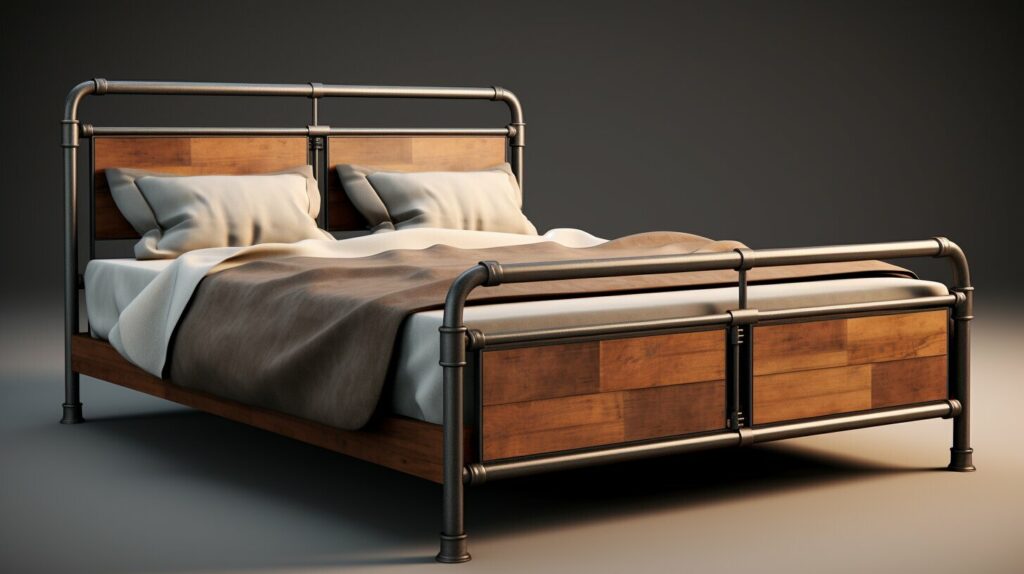
Final Thoughts
Choosing the right bed frame can dramatically improve your sleep quality and bedroom aesthetics. Whether you’re drawn to the sleekness of metal or the natural beauty of wood, make sure to weigh durability, comfort, style, and maintenance. With the right pick, your bed will become the cozy centerpiece of your sanctuary.
In conclusion, whether you select a wood vs metal bed frame, ensure it aligns with your sleeping habits.
To explore the emotional side of bedroom design, read about bedding ceremonies and timeless traditions or reflect on the art of bedding rituals across history.
FAQ
Many people often ask about the differences between a wood vs metal bed frame and their respective benefits.
- What are the pros and cons of metal bed frames?
- Metal bed frames are durable, lightweight, and adjustable, but may rust or squeak over time and lack cushioning.
- Are wooden bed frames better for support?
- Yes, especially hardwood frames with slats—they offer strong, even support for most mattress types.
- Which is better for a small bedroom—wood or metal?
- Metal frames are better for small rooms as they are less bulky and give a more open visual feel.
For small spaces, a wood vs metal bed frame can dictate the room’s overall design feel.
- Can I use any mattress with either type?
- Yes, but check compatibility—memory foam needs solid support, while hybrid or spring mattresses work well with either.
Ultimately, the decision hinges on whether you favour a wood vs metal bed frame based on your lifestyle.

